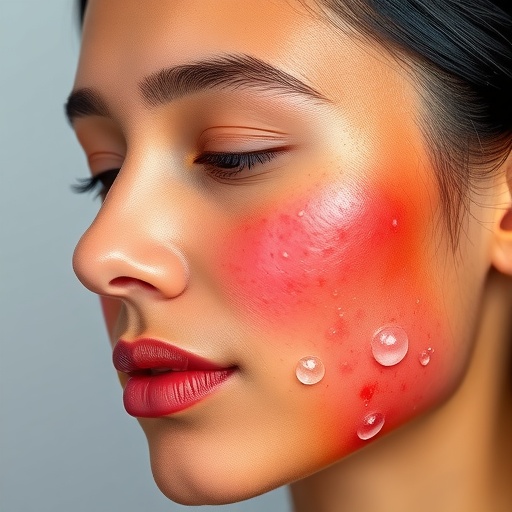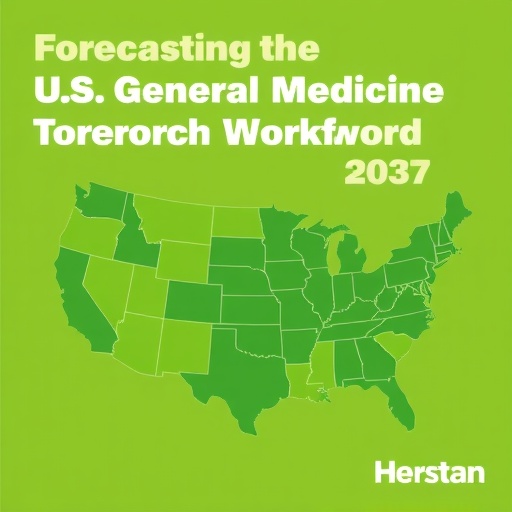In a groundbreaking new study published in Nature Communications, researchers have unveiled a cutting-edge machine learning model that promises to revolutionize the early detection of skin cancer across diverse ethnic groups. Utilizing the powerful XGBoost algorithm, the team designed a multifactorial risk assessment tool that integrates a wealth of clinical and demographic data, substantially improving predictive accuracy beyond traditional screening methods. This advance signifies a pivotal step toward personalized medicine initiatives for one of the most common cancers worldwide.
Skin cancer, encompassing melanoma and non-melanoma types, remains a major public health concern due to its increasing global incidence and potential lethality when diagnosis is delayed. Conventional screening relies heavily on visual inspections and biopsy of suspicious lesions, a process often constrained by subjective interpretation and limited accessibility, especially among minorities. Such disparities prompted the researchers to develop an objective, data-driven solution that could overcome human limitations and incorporate ethnically diverse population data to ensure broad applicability.
The team harnessed the eXtreme Gradient Boosting (XGBoost) framework, a state-of-the-art ensemble learning method renowned for its robustness in handling complex, high-dimensional data. By training the model on a vast multiethnic cohort, including patients with varied skin types and backgrounds, they captured nuanced patterns and correlations among established risk factors such as age, genetic predispositions, ultraviolet exposure history, and phenotypic traits like skin pigmentation.
What sets this model apart is its integration of traditionally disparate data sources—clinical histories, genetic markers, and environmental exposures—into a coherent risk stratification algorithm. This holistic approach allowed the model not only to flag individuals at elevated risk but also to assign probabilistic confidence scores that can aid clinicians in making informed diagnostic and monitoring decisions. Comparisons against existing screening protocols revealed marked improvements in sensitivity and specificity.
The implementation of XGBoost afforded several technical advantages, including efficient handling of missing data common in clinical records and the ability to model nonlinear interactions among risk factors. The algorithm’s gradient boosting paradigm sequentially refines predictions by minimizing classification errors, yielding a predictive model with exceptional generalizability. Importantly, this framework is computationally scalable and amenable to real-time integration within electronic health record systems.
Validation of the model was carried out on a robust testing population spanning multiple ethnic groups and geographic regions, underscoring its applicability across demographic spectra. This multiethnic validation addresses a chronic shortfall in many prior predictive tools, which often suffer from biases limiting their utility outside of the populations on which they were originally developed. The current research, therefore, represents a step toward health equity in dermatologic diagnostics.
Beyond diagnostic accuracy, the model’s output includes interpretable feature importance metrics that highlight which risk factors weigh most heavily in individual predictions. This transparency fosters clinician trust and facilitates patient communication by elucidating personalized risk contributors. The researchers emphasize the model’s potential role in augmenting, not replacing, clinical judgment to optimize patient outcomes.
One compelling aspect of this study is its potential to streamline skin cancer screening in resource-limited settings. By automating risk assessment and minimizing dependency on expert dermatologists for initial screenings, this tool could democratize access to preventative care. Early identification of high-risk individuals would enable timely interventions, ultimately reducing morbidity and healthcare costs.
The algorithm’s performance in predicting melanoma risk, traditionally the most lethal form of skin cancer, was particularly notable. Enhanced identification of patients warranting closer surveillance or prophylactic measures could translate into substantial reductions in advanced melanoma diagnoses. Such prognostic capabilities illustrate the transformative power of artificial intelligence in precision oncology.
In parallel, the model incorporates environmental data such as ultraviolet radiation exposure indexes derived from geospatial analytics. Accounting for these contextual variables enriches the model’s predictive granularity, recognizing the cumulative effects of lifestyle and ambient risk factors on skin carcinogenesis. This novel integration exemplifies how multidisciplinary datasets can converge to produce sophisticated medical prediction tools.
The researchers also tackled challenges related to potential algorithmic biases by employing stratified cross-validation and careful hyperparameter tuning, ensuring robust performance across subpopulations. They argue that rigorous external validation is paramount to the ethical deployment of AI-driven healthcare solutions, particularly when addressing diseases with known disparities.
Looking ahead, the team envisages several avenues for expanding this work, including incorporating genomic sequencing data and longitudinal health records to capture dynamic risk trajectories. They also advocate for prospective clinical trials to evaluate real-world impact and integration within screening programs. Ultimately, such advancements could pave the way for fully personalized skin cancer prevention strategies.
This new paradigm in dermatologic risk assessment aligns with broader trends in AI-enabled medicine, where interpretable machine learning models are increasingly leveraged to enhance clinical workflows. The study’s success in balancing accuracy, inclusivity, and transparency may serve as a blueprint for similar efforts targeting other complex diseases characterized by heterogeneous risk profiles.
As clinicians and public health officials digest these compelling findings, the promise of an AI-empowered, equitable approach to skin cancer detection comes sharply into focus. With skin cancer rates rising globally, especially among aging populations, innovations like this risk factor-based XGBoost model offer a beacon of hope, emphasizing how technology can bridge gaps in healthcare delivery and improve patient survival outcomes.
In sum, this research marks a significant milestone in the quest to harness artificial intelligence for precision dermatology. By infusing predictive modeling with diverse, comprehensive risk data and validating it across multiethnic cohorts, the scientists have crafted a tool that transcends traditional barriers and makes meaningful strides toward reducing the skin cancer burden worldwide.
Subject of Research: Development and validation of a highly accurate, multiethnic risk factor-based XGBoost model for skin cancer identification
Article Title: A highly accurate risk factor-based XGBoost multiethnic model for identifying patients with skin cancer
Article References:
D’Antonio, M., G. Gonzalez Rivera, W., Greenes, R.A. et al. A highly accurate risk factor-based XGBoost multiethnic model for identifying patients with skin cancer. Nat Commun 16, 9542 (2025). https://doi.org/10.1038/s41467-025-64556-y
Image Credits: AI Generated
Tags: advanced risk assessment toolsclinical data for cancer detectiondemographic factors in cancer riskearly detection of melanomaensemble learning in medicinehealthcare disparities in skin cancermachine learning in healthcaremultiethnic skin cancer risksnon-melanoma skin cancer screeningpersonalized medicine skin cancerpredictive modeling for skin cancerXGBoost skin cancer detection





